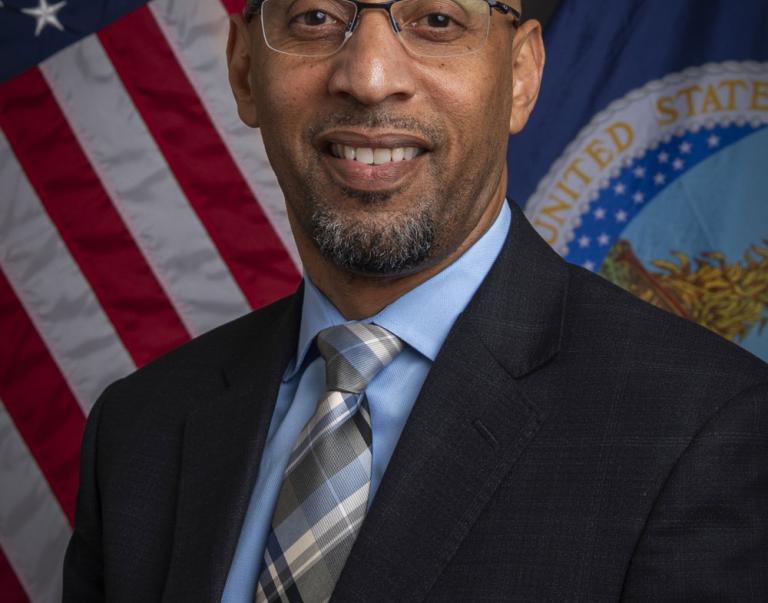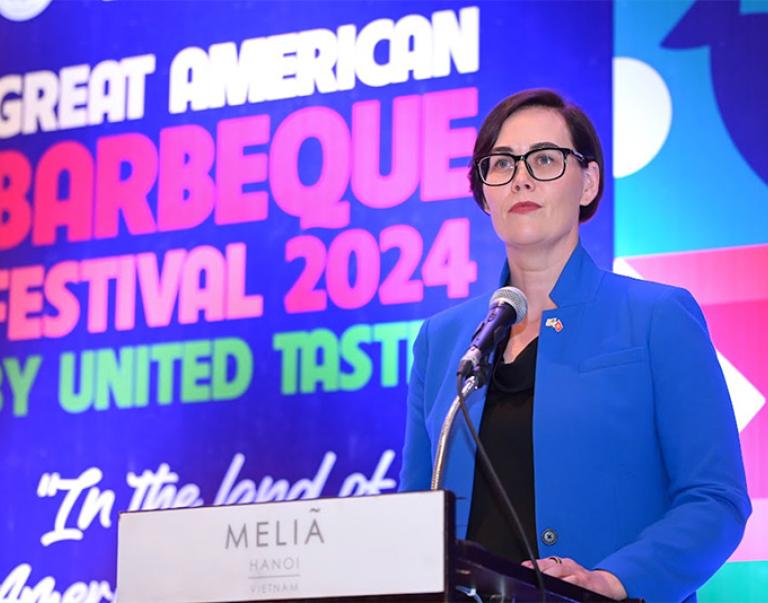CARRIERE, Miss., Sept. 19, 2016 – U.S. Department of Agriculture (USDA) Under Secretary for Natural Resources and Environment Robert Bonnie today announced a new three-year, $328 million restoration strategy to improve water quality and help coastal ecosystems heal following the Deepwater Horizon oil spill. The strategy will guide how USDA will steer conservation efforts on private lands in priority areas of the Gulf of Mexico region. As Gulf Coast Ecosystem Restoration Council, or RESTORE Council, USDA will work in partnership with the five Gulf States, other federal agencies, and landowners to explore opportunities for how the funding announced today can complement RESTORE Council and other funding from the settlement of the Deepwater Horizon oil spill.
Bonnie announced the strategy today from a working forest near Carriere, Mississippi where the landowner has worked with USDA's Natural Resources Conservation Service (NRCS) to adopt a variety of conservation practices to improve water quality downstream.
"We're working side-by-side with farmers, ranchers and forest landowners to improve their operations while taking care of natural resources in the region," Bonnie said. "With most of the land in the region privately owned, working lands on the Gulf Coast are pivotal to the region's recovery."
As part of NRCS' Gulf of Mexico Initiative (GoMI), this three-year plan strategically directs existing and anticipated Farm Bill funds for technical and financial assistance through a variety of Farm Bill conservation programs to key coastal counties where they can have the best returns. From now through 2018, NRCS will help agricultural producers plan and implement conservation improvements to 3.2 million acres in priority areas, which ultimately result in cleaner water and healthier ecosystems. Assistance is provided through a number of Farm Bill programs, including the Environmental Quality Incentives Program (EQIP), Conservation Stewardship Program (CSP) and Agricultural Conservation Easement Program (ACEP).
This targeted strategy focuses on improving and increasing water, restoring coastal ecosystems and leveraging local, state and federal partnerships in more than 200 Gulf-area counties and parishes.
Improving Water Quality and Conserving Water
Through an array of voluntary conservation programs, this Gulf of Mexico strategy will provide financial and technical assistance to producers, helping them adopt a number of conservation practices to clean and conserve water, such as managing for nutrients, using no-till, planting cover crops, installing grade stabilization structures and water control structures. These practices trap and control pollutants like sediment and nutrients, reduce erosion and improve use of water. NRCS plans to continue these efforts, especially in priority watersheds, such as the Fish River in Alabama and Indian Bayou in Louisiana.
Through implementing this strategy, modeling from USDA's Conservation Effects Assessment Project shows voluntary conservation efforts will prevent runoff of 117,000 tons of sediment, 1 million pounds of nitrogen and 200,000 pounds of phosphorus. In coastal Mississippi, targeted efforts led to Orphan Creek's removal from the list of impaired streams, and in Louisiana, two watersheds, Big Creek and East Fork Big Creek, are on track for delisting.
Restoring Coastal Ecosystems
Through a variety programs integral to this Gulf of Mexico Initiative, NRCS works with Gulf producers to restore and enhance ecosystems, such as using prescribed burning, establishing trees and shrubs, managing wetland and upland habitats for wildlife. The Gulf region is home to longleaf pine forests and other unique ecosystems, and producers using these practices are restoring and enhancing them. Nearly 70 percent of continental United States is privately owned, making conservation efforts on farms, ranches and forests crucial to many species.
The strategy builds on the agency's successful Migratory Bird Habitat Initiative (MBHI), which was launched just after the oil spill and helped producers create 470,000 acres of alternative habitat for birds migrating south. This effort tremendously benefited birds, demonstrated by research by Mississippi State University that found lands with conservation practices had more birds and biodiversity.
Partnerships
The strategy accounts for USDA's leadership role as Chair of the RESTORE Council and Trustee of the Natural Resource Damage Assessment, and the USDA commitment to supporting their comprehensive Gulf restoration strategies by leveraging investments through GoMI and other Farm Bill programs. It also builds on USDA's existing $100M partnership with the National Fish and Wildlife Foundation (NFWF) announced in 2014. In addition, NRCS and NFWF each plan to invest an additional $5 million in the five Gulf States over the next five years as part of an ongoing agreement between the two groups.
Coordinating the investments of these multiple funding streams in support of existing watershed scale strategies will yield measurable outcomes for improving the health of Gulf Coast ecosystems and the communities that depend on them, and support a more vibrant agricultural sector.
More Information
In total, NRCS has worked side-by-side with producers in the five Gulf States to put conservation practices on more than 84 million acres from 2010, the year of the spill, to 2015. Much of this work occurred in the priority areas targeted by this strategy.
Download the GoMI restoration strategy. For more information, contact your local USDA service center or visit nrcs.usda.gov/gulf.
#
USDA is an equal opportunity provider and employer. To file a complaint of discrimination, write: USDA, Office of the Assistant Secretary for Civil Rights, Office of Adjudication, 1400 Independence Ave., SW, Washington, DC 20250-9410 or call (866) 632-9992 (Toll-free Customer Service), (800) 877-8339 (Local or Federal relay), (866) 377-8642 (Relay voice users).



